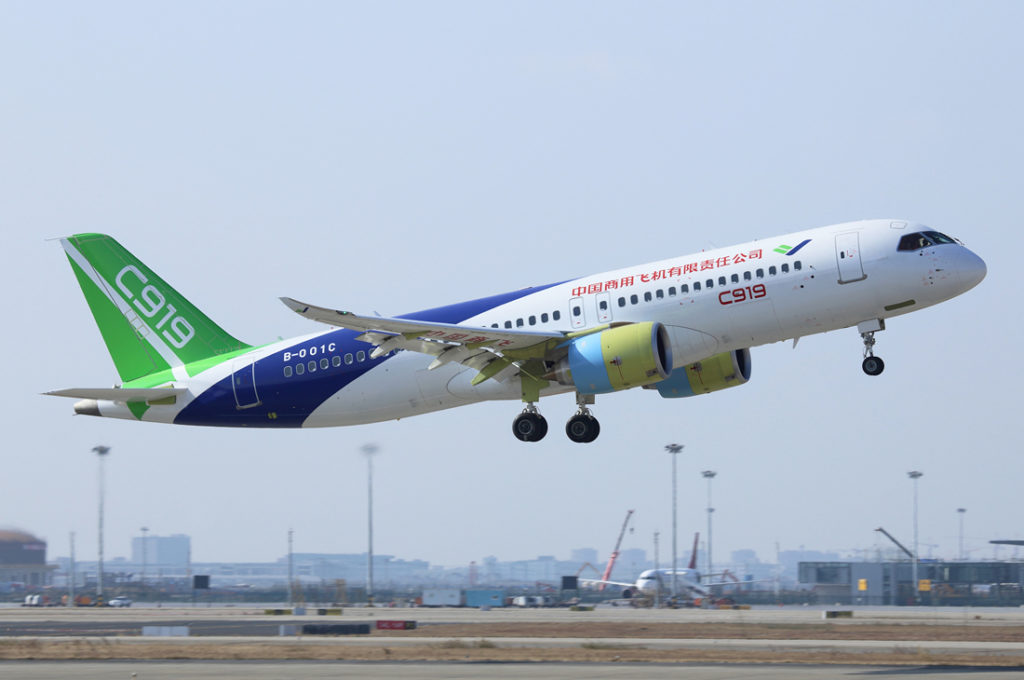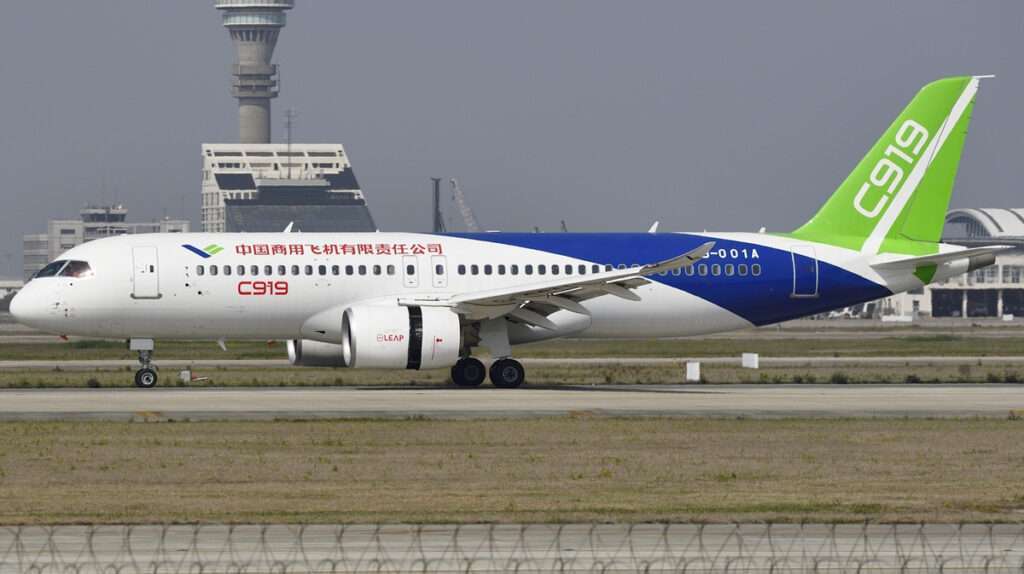The Southeast Asian aviation market, with its rapid growth and sizable passenger base, is emerging as a potential battleground for a new player – China’s homegrown COMAC C919 passenger jet.
This development reflects the ambitions of the Commercial Aircraft Corporation of China (COMAC) to not only challenge the established duopoly of Airbus and Boeing but also break free from dependence on Western technology in the face of potential restrictions.
Setting the Stage
COMAC’s C919, China’s first homegrown passenger jet, aims to challenge Airbus and Boeing in the single-aisle market.
Leveraging domestic resources and collaborating with international partners, COMAC developed the C919 to compete with the industry standard narrowbodies.
They utilized advanced aerodynamics and materials like composites to achieve fuel efficiency matching competitors.
While the engine – the LEAP-1C – is Western-made, the C919 signifies China’s growing ambitions in the aviation sector and its potential to disrupt the established duopoly.

Sights on Southeast Asia
China’s homegrown C919 passenger jet is clearly setting its sights on the booming aviation market of Southeast Asia. The allure of Southeast Asia is undeniable, and of course there is a cultural synergy.
Importantly, the region boasts one of the world’s fastest-growing aviation markets, fueled by factors like a rising middle class and increasing tourism.
This move reflects China’s ambition to not only compete with established giants like Airbus and Boeing but also lessen its reliance on Western technology.
The region’s aviation industry is experiencing remarkable growth, fueled by a rising middle class and increasing tourist arrivals. This translates to a growing demand for new and efficient aircraft, creating a potential niche for the C919 to take off.
Recognizing this opportunity, COMAC recently embarked on demonstration flights across five Southeast Asian nations: Vietnam, Laos, Cambodia, Malaysia, and Indonesia.
These flights showcased the C919’s capabilities while gathering data on its suitability for regional airports and routes.
This proactive approach highlights COMAC’s appetite for establishing a presence in the region.


Navigating Challenges
However, the C919 faces stiff competition from established players like Airbus and Boeing. These giants of course possess a strong presence in Southeast Asia, with airlines familiar with their products, extensive support networks, and proven track record.
Moreover, the C919 is a relatively new aircraft with limited operational history. Airlines are understandably cautious about adopting new models due to concerns about maintenance costs, pilot training, and potential teething issues.
Additionally, any political or geopolitical tensions between China and Southeast Asian nations could further complicate the C919’s adoption.
Despite the challenges, the C919 offers advantages that could appeal to airlines.
The aircraft boasts fuel efficiency comparable to its competitors, potentially leading to operational cost savings. Additionally, COMAC might be able to offer competitive pricing to gain a foothold in the market.

A Potential Launchpad, not a Guaranteed Takeoff
The geography of Southeast Asia could be favorable for the COMAC C919 for a couple of reasons:
- Range: The C919 has a range of around 5500 kilometers, which is enough to connect many of the major cities within Southeast Asia. For instance, a flight from Singapore to Ho Chi Minh City, Vietnam is roughly 1,200 kilometers.
- Passenger Capacity: With a capacity of 192 passengers, the C919 falls into a good middle ground between smaller regional jets and larger long-haul aircraft. This could be suitable for popular routes within the region.
The downside is that many Southeast Asian airlines have a strong focus on connecting to major international hubs rather than just regional routes. The C919 might not be the ideal fit for these longer routes.
Summary
Ultimately, the C919’s success in Southeast Asia hinges on COMAC’s ability to address airline concerns.
Building trust and confidence in the aircraft’s safety, reliability, and long-term support is crucial. Additionally, offering competitive pricing and financing options will be essential to incentivize airlines to switch from established players.
While the Southeast Asian market presents a significant opportunity for the C919, it’s not a guaranteed win.
COMAC faces an uphill battle against established giants and needs to effectively address airline concerns.
Whether the region becomes the launchpad for the C919 or remains a distant dream will depend on COMAC’s ability to overcome market resistance and demonstrate the C919’s competitive edge.

Click the photo to join our WhatsApp channel so then you can stay up to date with everything going on in the aviation industry!









